- Home
- Patrick Robinson
The Shark Mutiny (2001) Page 27
The Shark Mutiny (2001) Read online
Page 27
They had chased and pursued nothing. They had just waited, silently, for the prime moment to fire, when Lt. Commander Guangjin’s ingenious invention had done its work. Unlike Ben Adnam they had not needed to assess the wind and the carrier’s time of approach. The very occasional transmissions from the floating electronic buoys had “herded” Big John into the appointed place like so many sheepdogs.
The Chinese submarines were in there, in 600 feet of water, the Kilo-Class hulls 366 and 367, jet-black 3,000-ton diesel-electrics built in Russia’s Admiralty Yard at Saint Petersburg. They were each armed with 18 TEST 71/96 wire-guided passive-active torpedoes, homing at 40 knots to 15 kilometers. But the Chinese COs would fire their two torpedoes, with their 205kg nonnuclear warheads, from a lot closer than that.
But Admiral Zhang was not out to create world havoc and mass destruction. He just sought, quietly, to cripple the great U.S. warship, despite all the difficulties that would involve.
And at 2100 that Monday evening, his underwater commanders drew a bead on Big John.
Same time (0800 local, Monday).
The White House.
Everything about the goddamned Chinese baffled Arnold Morgan. He had no idea why they would have wanted to infuriate the entire Western world, not to mention much of the Eastern world, by assisting the goddamned towelheads in mining the Strait of Hormuz.
Maybe just for money. Maybe they really thought they could make a huge financial killing by selling their oil from Khazakhstan at the massive world prices that would follow the blockade of the Gulf of Iran.
Maybe. But maybe not. It made some sense to the President’s National Security Adviser. But not enough. Well, the USA had slammed back hard, as China must have known they might. And no one had complained to anyone. Certainly the USA knew there was no point remonstrating with the Chinese over the minefield, because they would say nothing. Equally the Chinese had said nothing to anyone about the destruction of the oil refinery.
Admiral Morgan knew he was not going to receive any answers to anything. Which was why he had summarily requested the presence of the Chinese ambassador to Washington, the urbane Ling Guofeng. Arnold might not be getting any answers, but he was about to deliver one or two truths.
Kathy O’Brien politely ushered the ambassador into the main office at 0815. The two men knew each other, of course, but it was always a cool relationship. The Admiral had passed one or two withering broadsides across the bow of the Chinese ship of state in the past few years, and Ling Guofeng had frequently been obliged to keep his head well down.
In another life, they might actually have been friends. Both of them knew more about the world than was good for anyone. And both of them knew implicitly where their loyalties were. Arnold Morgan, a natural aggressor, was constantly issuing warnings, making threats and, occasionally, carrying them out. The veteran Ambassador Ling, in his role as China’s chief appeaser in Washington, was thus obliged to absorb a substantial amount of grief from the Admiral. But the diplomat from Shanghai knew how to roll with the punches.
“Good morning, Admiral,” he said, bowing. “What a very kind invitation. It’s been too long.”
Arnold Morgan raised his eyes heavenward…Too long! Never mind the blown-up tankers, never mind the minefield, the world oil crisis, Japan almost going bankrupt because of it. Never mind that the blasted refinery’s still spouting flames one hundred feet into the air…. Will someone ever save me from this Oriental bullshit?…“Too long,” he says. Jesus Christ.
“Ambassador, the pleasure is, as always, mine,” replied the Admiral. “Please sit down. I have ordered a pot of Lapsang Suchong, your favorite China tea, I believe—at least your favorite in this country.”
“Now that is very kind of you, and I hope it will smooth our way during our discussions.”
And Arnold slyly congratulated himself on Kathy’s call to Ling’s secretary on Friday afternoon to establish the subtleties of the ambassador’s tastes. He had no recollection that Kathy had made the call without even asking him.
Anyway, the tea was delivered and poured by a polite and attentive waiter, and Arnold Morgan stepped up to the plate.
“Ambassador, there is much that cannot be said at this discussion—much, possibly, that never will be said. I have asked you here because I believe that you and I understand each other.”
“I think and hope that we do,” replied Ling in his impeccable English accent.
“Well, let me begin by saying that we are very well aware of China’s complicity in the placing of the minefield in the Strait of Hormuz.”
“Oh, really?” replied Ling. “I have not been so informed.”
“And I guess, if I wanted to, I could inform you myself of the origin of the mines, the date they left Moscow, the times of the refueling stops for the Andropov freighter that delivered them, and the date the PLAN assisted the Iranians in laying the fields.”
Ambassador Ling said nothing, betrayed nothing, not a flicker of understanding—the precise way all great ambassadors are supposed to operate under this kind of pressure in a foreign capital.
“But there is no need for me to do so, since we both understand the…er…rather heated game we are playing. But I would like to mention the fire that is still raging in the strait at the Chinese refinery. That, ambassador, represents the collective wrath of the entire industrial world. So I would warn you about the danger of writing it off as an accident and blithely rebuilding it.”
“Am I hearing an admission that the United States of America actually attacked and destroyed the ten-billion-dollar Chinese refinery in the strait?”
“No more than I am hearing an admission that China purchased hundreds of sea mines at vast expense from Moscow, and then tried to shut down the principal power supply of every oil-consuming country in the world. Damn nearly all of them, that is.”
Ambassador Ling said nothing.
And Admiral Morgan continued: “And so, my good friend, Guofeng, I would like to conclude with this piece of advice for you and your government. In our opinion, and in the opinion of all our allies, you have committed a crime of vast proportions in the Strait of Hormuz. And it is a crime that must not be repeated. It is therefore my rather sad duty to advise you”—and here his voice rose to its familiar growling quality—“to stay the fuck out of the Middle East oil routes.”
“And if we should insist on our right to trade in any international waters?”
“You would find no objection from us, because your ships are welcome to visit us at any time. But if you continue to put Chinese warships anywhere near the north reaches of the Arabian Sea, inside the Strait of Hormuz or indeed in the Gulf of Iran, we shall have no hesitation if it comes to sinking them. Your nation has committed a terrible crime, for reasons best known to your masters in Beijing. But the rest of the world will not permit you the leeway to repeat that crime. Ling, old buddy, your Navy is on its way right back to the South China Sea.”
“I shall indeed report your views to my government. But do I have your permission to inform them that the United States willfully destroyed the Chinese refinery?”
“No, Ambassador. You do not. You may tell them that the elimination of the refinery was in your opinion an act of retribution against your government for crimes committed by China in the strait. You may also say that the U.S. government was not unsupportive of the action against the Chinese oil. But as to who perpetrated the destruction, that may never be known. But if I had to guess, I’d say you should look to some of those Arabs who are currently unable to sell their oil because it’s all trapped in the gulf.”
“Yes, of course,” replied the ambassador. “How foolish of me not to have identified the culprit at once.”
“Well, for the time being, that would appear to be all. But heed what I say, Ambassador. Because I would not want things to become any more tense between us. And you guys have done quite sufficient damage for one month.”
“And, quite frankly, Admiral, so, might I say, have
you.”
Same time (2145 local).
Off the island of Ishigaki.
Hardly moving through the water, both Kilos waited silently, 10 miles apart, in the path of the carrier’s approach from the southeast. The JFK was clearly identifiable by her noise signature, and at 2215 the westerly Kilo assessed that the Americans would pass within 3,000 yards.
The Chinese prepared to fire, while the easterly Kilo decided to wait, just in case an attack by her consort should cause Big John to swerve her way. It is almost impossible to coordinate a torpedo attack by two submarines. Only one would open fire, since charging in at high speed would simply give the game away.
The westerly Kilo’s two torpedoes would come in from the carrier’s stern arcs on predictions from the last-known bearing. The big TEST weapons would be launched quietly at 30 knots, staying passive all the way, which at least gave them a chance of avoiding a full, frontal smash into the hull. The Chinese wanted only the shafts, and there would be nothing Big John could do. There would be no time.
2150. “Stand by one…”
“Last bearing check.”
“SHOOT!”
The Chinese torpedo came powering out of the tube, hesitated for a split second, then whined away into the dark waters.
“Weapon under guidance…” Kilo 636 was right on top of her game.
“Arm the weapon.”
“Weapon armed, sir.”
Ninety seconds go by. “Weapon now one thousand yards from target, sir.”
“Weapon has passive contact.”
“Release to auto-home passive.”
Moments later, Kilo 636 loosed off a second torpedo, which, like its colleague, was now streaking through the water toward the lights on the stern end of the carrier’s flight deck. It was a classic submarine attack, conducted with ruthless professionalism in a manner that would tolerate no comeback. There simply was no time.
Inside the ops room of the carrier, the sonar men picked up the torpedoes. At least they picked up one of them.
“Admiral—sonar. TORPEDO! TORPEDO! TORPEDO!…bearing Green one-nine-eight—Torpedo HE tight-aft…REAL CLOSE, SIR. REAL CLOSE…”
“Real close” now meant no more than 500 yards. Which put the lead torpedo 30 seconds from impact somewhere on the stern of the carrier. Firing back was out of the question. An 88,000-ton carrier is simply not built for close combat of this type.
Someone yelled: “DECOYS!” But that was about two minutes too late. The Combat Systems Officer alerted all ships that the flag was under attack. But before he could even utter the words “Chinese submarine,” the first TEST 71/96 smashed into the port outer propeller, blowing it off and buckling two of the four shafts.
Moments later, the second torpedo, undetected, slammed into the port inner propeller and blew up with staggering force, causing distortion to the starboard inner as well. Big John, even if she was still floating, was not going anywhere for a while.
The JFK was well compartmentalized, and she would not sink. But with her massive shafts damaged, she was no longer capable of operating aircraft. The great leviathan began to list slightly. Damage-control teams were right at work on the flooding. Engineers stared in horror at the extent of the harm done to the shafts.
The Admiral, still wondering where the next torpedo would come from, recalled the LA-Class submarines from deep water out to the southwest, bringing in one destroyer and a frigate for a close ASW hunt near the carrier.
The signal being sent to Pearl Harbor was as shocking to the communications room as the Japanese attack had been to the Naval staff 66 years previously:
“212155MAY07. Position 24.20N 124.02E. To CINCPACFLT from U.S. carrier John F. Kennedy. Hit by two torpedoes, passive homing unknown origin. Two explosions in shaft area. Three shafts out of action. One shaft remains serviceable. Max speed available 10 knots. Fixed-wing flying not feasible in less than 25-knot headwind. Initial assessment damage severity: requires early docking.”
Same time (0800 local).
Office of the CNO.
The Pentagon.
Admiral Alan Dixon was aghast. But the signal from CINCPACFLT Headquarters left no room for doubt. The Republic of China had unquestionably fired two torpedoes at a U.S. carrier, 125 miles off the east coast of Taiwan. Worse yet, they’d both hit, and the carrier had been powerless to stop them, and, so far, take any form of retaliatory action. Further attacks had to be expected but had not yet materialized.
Admiral Dixon decided that if the Chinese could torpedo the ship, they could also bomb it, and he ordered the immediate evacuation of all aircraft currently stationed on the carrier. Whatever crew could be spared and moved to Okinawa should go, too. All other manpower surplus to the essential running of the crippled ship should be removed to the JFK’s accompanying destroyers and frigates.
And now he hit the secure line to Admiral Morgan and broke the news to the incredulous, but thoughtful, National Security Adviser. “The thing is, Arnie, I am going to get the carrier back to Pearl—might have to tow her. Sounds too big for Okinawa. Anyway, she’s effectively out of action.”
“Yes. That’s a big ship to try to fix, so far from a major U.S. base,” replied Admiral Morgan. “Anyhow, I guess you better get over here…bring all the information you have and we’ll try to decide what the hell to do.”
Same time (2300 local).
Southern Fleet HQ.
Zhanjiang.
“Well, Jicai, very satisfactory,” purred Zhang Yushu. “That’s all of them, I believe. The Roosevelt, the Truman, the Constellation, and the John C. Stennis all so very busy seven thousand miles away in the Strait of Hormuz. The Ronald Reagan stranded nearly nine thousand miles away in San Diego. The John F. Kennedy out of action. Which leaves us entirely free to conduct some local business of our own.”
And at 2200 on the clear, moonlit evening of Tuesday, May 22, 2007, deploying the most massive display of military power since the UN’s 1991 advance on Saddam Hussein, the People’s Republic of China attacked Taiwan.
8
It was too quick even for STRONG NET, the brand-new multibillion-dollar air defense early-warning network. Taiwan’s Hawk surface-to-air missiles remained in their launchers as the Chinese onslaught came in. And there was not a bleep out of the new ultrasensitive Tien Kung medium-to-long-range system based on the old U.S. Patriot, and deployed around Taipei.
Everything about the attack from the mainland was utterly unexpected. Even the target was essentially way out in right field. But in the small hours of May 22, China was undeniably bombarding, presumably with a view to capture, the picturesque archipelago of the Penghu Islands, which sit 60 miles off Taiwan’s western shores.
Of course, the Penghus are not entirely picturesque. Taiwan maintains a 17,000-strong offshore island command army on Penghu. There is an airport, and outside the city of Makung a big Navy base, home of the 154th Fast Attack Squadron.
Now, at these midocean marks, China was literally hurling short-range ballistic missiles (SRBMs), launched into the night from the opposite shore from bases in Fujian and Jiangxi Provinces. And high above the Taiwan Strait an armada of China’s newly built B-6/BADGER long-range bomber aircraft, laden with land-attack cruise missiles (LACMs), was preparing to strike the Penghu Naval Base.
It was six minutes before Taiwan could respond, by which time the Makung shipyard was ablaze, with two 3,000-ton Knox-Class guided-missile frigates, the Chin Yang and the Ning Yang, burning ferociously alongside the jetties.
Taiwan launched her opening batteries of Tien Kung missiles from the west coast of the main island, straight at the incoming BADGERs and downed nine of them in 15 minutes. But they could not prevent the first wave of SRBMs from screaming into the outskirts of Makung, almost demolishing the entire Hsintien Road
to the north of the base, in the process reducing both the Martyrs’ Shrine and the Confucian temple to rubble.
The precision bombardment hit the airfield, blitzed the telephone company at t
he north end of the main Chungching Road
and the main downtown post office.
Within 10 more minutes Taiwan had a squadron of U.S.-built F-16 fighters in the air howling out of the night in pursuit of the BADGERs, which were no match for them, and the U.S.-supplied deadly accurate Sidewinder missile blew eight more of them out of the sky.
Below the opening air battle, a big flotilla of Chinese warships was moving in on the Penghus, led by the second of their Russian-built Sovremenny destroyers, in company with four Jangwei-Class guided-missile frigates and six of the smaller heavily gunned Jianghu Class, which had been conducting regular fleet exercises in the strait for the past five days.
Shortly after midnight they opened fire with a long-range shelling assault on the tiny islands of Paisha and Hsi, obliterating the three-mile-long bridge that joins them. They slammed two missiles into Hsi’s spectacular Qing Dynasty Hsitai Fort from which, on a clear day, you can see the mountains of both Taiwan and China. Then they turned southwest and battered the islands of Wang’an, Huching and Tongpan.

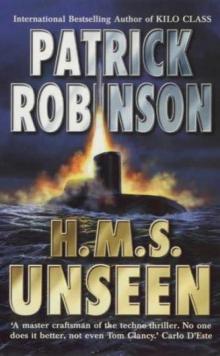 H.M.S. Unseen am-3
H.M.S. Unseen am-3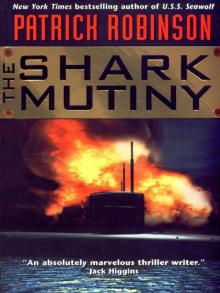 The Shark Mutiny (2001)
The Shark Mutiny (2001)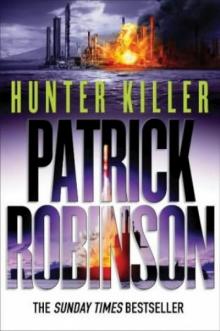 Hunter Killer am-8
Hunter Killer am-8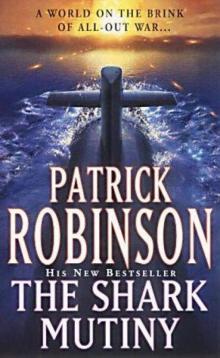 The Shark Mutiny am-5
The Shark Mutiny am-5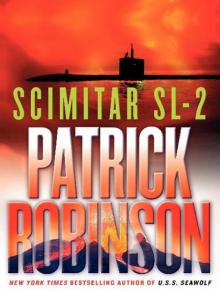 Scimitar SL-2
Scimitar SL-2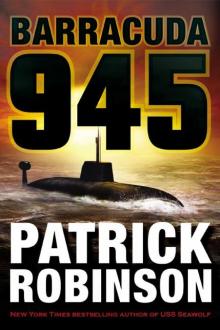 Barracuda 945 am-6
Barracuda 945 am-6 Hunter Killer
Hunter Killer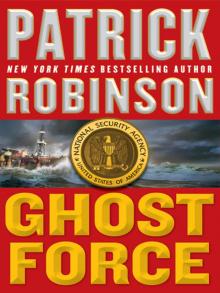 Ghost Force
Ghost Force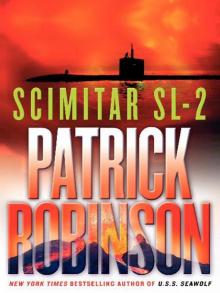 Scimitar SL-2 (2004)
Scimitar SL-2 (2004) Kilo Class am-2
Kilo Class am-2 The Lion of Sabray
The Lion of Sabray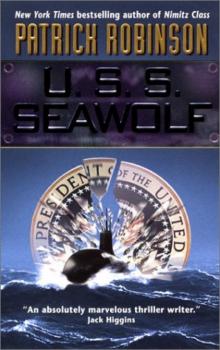 U.S.S. Seawolf am-4
U.S.S. Seawolf am-4 Ghost Force am-9
Ghost Force am-9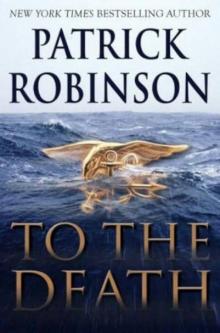 To the Death am-10
To the Death am-10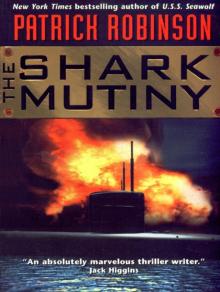 The Shark Mutiny
The Shark Mutiny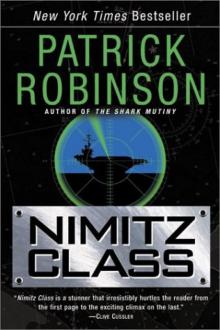 Nimitz Class am-1
Nimitz Class am-1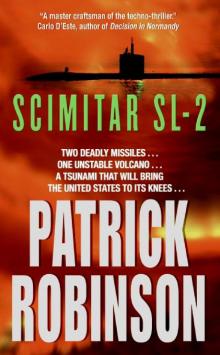 Scimitar SL-2 am-7
Scimitar SL-2 am-7 Barracuda 945
Barracuda 945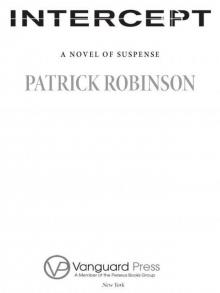 Intercept
Intercept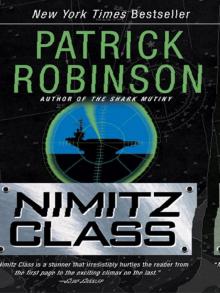 Nimitz Class (1997)
Nimitz Class (1997)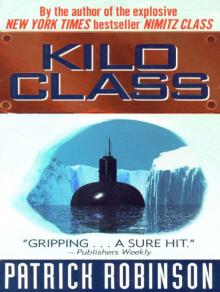 Kilo Class
Kilo Class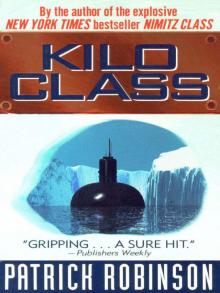 Kilo Class (1998)
Kilo Class (1998) Diamondhead
Diamondhead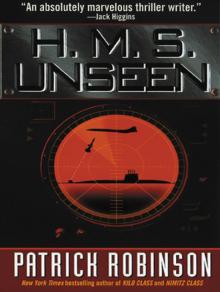 H.M.S. Unseen
H.M.S. Unseen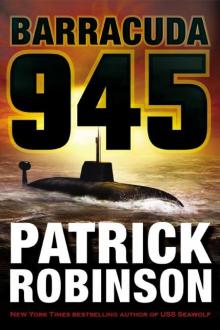 Barracuda 945 (2003)
Barracuda 945 (2003)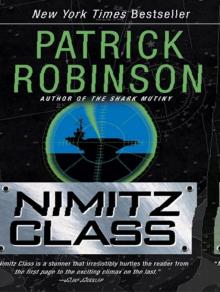 Nimitz Class
Nimitz Class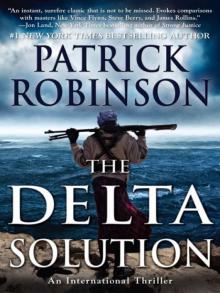 The Delta Solution
The Delta Solution U.S.S. Seawolf
U.S.S. Seawolf